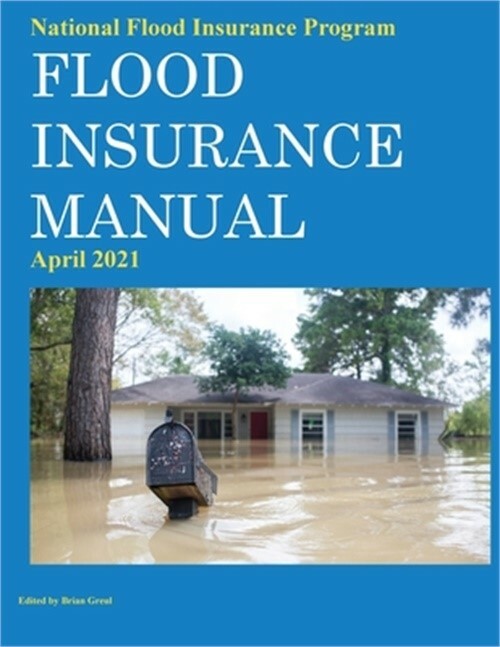Table of Contents
Quebec Floods
Urgent! Quebec Floods: Risk Remains High!
Quebec Floods recede, but the risk remains, highlighting the urgent need for improved flood management strategies and climate change adaptation.
Quebec’s Climate Crossroads: Navigating Flood Risks in a Changing World
The specter of flooding has once again haunted southern Quebec, a stark reminder of the escalating challenges posed by climate change. While the immediate crisis subsides as floodwaters recede, the underlying risk remains palpably high. Communities, emergency services, and climate experts are now grappling with difficult questions about the future and what it holds. How can Quebec adapt to increasingly unpredictable weather patterns? What measures can be implemented to protect vulnerable populations and infrastructure? These are not merely academic questions; they are matters of survival and resilience in a world transformed by a changing climate.
The narrative of Quebec’s battle with floods is not just about water levels and damaged properties. It is a story of human resilience, of communities banding together in the face of adversity. But it’s also a cautionary tale, one that demands immediate and sustained action. The early spring thaw that triggered the recent floods is a symptom of a larger malaise – a planet warming at an alarming rate. The question now is: can Quebec lead the way in innovative adaptation strategies, or will it remain a perennial victim of climate change?
Quebec’s Brush with Disaster: A Chronicle of the Recent Floods
The recent deluge painted a grim picture across southern Quebec, with Drummondville and Beauceville bearing the brunt of nature’s fury. The Saint-François and Chaudière Rivers surged beyond their banks, inundating homes, businesses, and vital infrastructure. Evacuation orders were swiftly issued, displacing hundreds and turning familiar streets into treacherous waterways. Drummondville, in particular, saw approximately 300 buildings evacuated as the Saint-François River reached alarming levels.
In Beauceville, an ice jam on the Chaudière River exacerbated the crisis, creating a bottleneck that further elevated water levels. The suddenness of the thaw caught many off guard, turning what seemed like a distant threat into an immediate emergency. Roads became impassable, schools shuttered, and emergency shelters opened their doors to those forced from their homes. The initial chaos gradually gave way to a coordinated response, as emergency services and volunteers worked tirelessly to rescue stranded residents and provide aid to those in need.
The receding floodwaters now reveal the extent of the damage, a mosaic of shattered lives and compromised livelihoods. But amidst the debris and devastation, there is also a palpable sense of determination – a collective resolve to rebuild, adapt, and prepare for the inevitable challenges that lie ahead. The images and stories emerging from these communities are a powerful testament to the human spirit, and a stark reminder of the urgent need for climate action.
The Human Stories: Voices from the Flood Zone
Beyond the statistics and satellite imagery, the true impact of the Quebec floods lies in the individual stories of those who lived through them. Consider Marie, a Drummondville resident who watched helplessly as the Saint-François River crept closer to her doorstep, eventually forcing her and her family to evacuate. Or Jean-Pierre, a Beauceville shop owner who lost his entire inventory to the floodwaters, jeopardizing his livelihood and future.
These are not isolated incidents; they are representative of the thousands of lives disrupted and forever changed by the floods. Speaking to these individuals, one hears tales of fear, uncertainty, and loss. But there are also stories of remarkable resilience, of neighbors helping neighbors, and of communities banding together to overcome adversity. The emotional toll of these events cannot be overstated. The trauma of losing one’s home, possessions, and sense of security can linger long after the waters have receded.
Yet, amidst the despair, there is also hope. A hope for a better future, for stronger communities, and for leaders who will take decisive action to address the root causes of climate change. The voices from the flood zone are a powerful call to action, a reminder that climate change is not an abstract concept, but a lived reality with profound human consequences. Their stories serve as a poignant reminder of what’s at stake and why we must act now to protect vulnerable communities.
Why Now? Unpacking the Early Spring Thaw Phenomenon
The unusually early and rapid spring thaw that triggered the Quebec floods was a confluence of meteorological factors, a perfect storm of warm temperatures and relentless rainfall. Record-high temperatures were recorded in several parts of the province, with Beauceville reaching an unprecedented 20.1°C and Montreal hitting 16.4°C. This unseasonable warmth, combined with persistent rain, led to a rapid melting of snow and ice, overwhelming river systems and drainage infrastructure.
The speed of the thaw caught many by surprise. What typically unfolds over several weeks was compressed into a matter of days, leaving little time for communities to prepare. The ice jam on the Chaudière River further complicated matters, creating a temporary dam that exacerbated flooding in Beauceville. The situation underscores the complex interplay between temperature, precipitation, and river dynamics, and the challenges of predicting and managing flood risks in a changing climate.
Understanding the underlying causes of the early spring thaw is crucial for developing effective mitigation strategies. It’s not simply about responding to individual events; it’s about addressing the systemic factors that make these events more frequent and intense. This requires a comprehensive approach that includes monitoring weather patterns, investing in infrastructure upgrades, and implementing policies to reduce greenhouse gas emissions.
Climate Change in Quebec: A Region at Risk
The Quebec floods are not an isolated incident; they are a symptom of a larger global crisis. Climate change is occurring at twice the global average in Quebec, making the province particularly vulnerable to its impacts. Rising temperatures, altered precipitation patterns, and more frequent extreme weather events are becoming the new normal. The province is witnessing a dramatic shift in its climate, with far-reaching consequences for its ecosystems, economy, and communities.
The increasing frequency and intensity of floods are just one manifestation of this changing climate. Quebec is also experiencing more severe heatwaves, droughts, and wildfires. These events not only cause immediate damage and disruption but also have long-term implications for public health, agriculture, and tourism. The economic costs of climate change are already substantial and are projected to increase significantly in the coming years.
Addressing climate change in Quebec requires a multi-pronged approach that includes reducing greenhouse gas emissions, adapting to the impacts of a changing climate, and investing in climate-resilient infrastructure. It also requires a shift in mindset, from viewing climate change as a distant threat to recognizing it as an immediate and pressing challenge that demands urgent action. The future of Quebec depends on its ability to confront this challenge head-on and build a more sustainable and resilient society.
Decoding the New Flood Maps: What They Mean for Homeowners
In response to the growing threat of flooding, the Quebec government is updating its flood zone mapping system, which in some areas hasn’t been revised in three decades. The new maps will introduce four categories of “flood intensity”: very high, high, moderate, and low. These categories will consider factors such as frequency, intensity, and climate change impacts, providing a more accurate and nuanced assessment of flood risk.
For homeowners, the new flood maps will have significant implications. Properties located in very high-intensity flood zones may face restrictions on rebuilding severely damaged structures. Repair and renovation work can generally proceed in flood-prone areas, but the extent of allowable modifications may be limited. Construction of new buildings in flood-prone areas, even in low-intensity sectors, will not be permitted under the new regulations.
The updated flood maps are intended to provide homeowners with more accurate information about their flood risk, enabling them to make informed decisions about insurance, property improvements, and future development. However, the implementation of these maps has also sparked controversy, with some property owners expressing concerns about potential impacts on property values and insurance costs. It’s essential for the government to engage in open and transparent communication with the public to address these concerns and ensure a smooth transition to the new system.
Building in the Face of Floods: New Regulations and Restrictions
The Quebec government’s proposed new regulations aim to strike a balance between allowing communities to thrive and protecting them from the increasing risks of flooding. While repair and renovation work can generally proceed in flood-prone areas, there are significant restrictions on rebuilding severely damaged structures in very high-intensity flood zones. This reflects a recognition that some areas are simply too dangerous to rebuild in, given the escalating threat of climate change.
The construction of new buildings in flood-prone areas will be prohibited, even in low-intensity sectors. This is a significant departure from previous policies and reflects a growing awareness of the long-term costs of building in harm’s way. The new regulations are intended to guide future development away from vulnerable areas and promote more sustainable land-use practices.
These regulations have the potential to significantly alter the landscape of Quebec’s flood-prone communities. They may require homeowners to make difficult choices about their properties, and they may impact the real estate market in affected areas. However, they also represent a crucial step towards building more resilient communities that can withstand the challenges of a changing climate. The government’s challenge is to implement these regulations in a fair and equitable manner, while providing support and resources to those who are most affected.
Municipalities on the Front Lines: Local Strategies for Flood Protection
Municipalities are on the front lines of the battle against flooding, tasked with implementing local strategies to protect their communities. One of the most common approaches is the construction of flood protection structures like dikes. Dikes can effectively contain floodwaters and prevent them from inundating homes and businesses. However, they are also expensive to build and maintain, and they can have unintended consequences for river ecosystems.
Another strategy is reclassification, where municipalities implement flood protection measures that lead to a reclassification of their flood zone intensity. This can potentially reduce insurance costs for homeowners and allow for more development in previously restricted areas. However, reclassification requires a significant investment in infrastructure and a commitment to ongoing maintenance.
Municipalities also play a crucial role in educating residents about flood risks and promoting preparedness. This includes providing information about evacuation routes, emergency shelters, and flood insurance. By empowering residents to take proactive steps to protect themselves and their properties, municipalities can significantly reduce the impact of flooding events. Ultimately, the success of flood protection efforts depends on a strong partnership between local governments, provincial authorities, and individual citizens.
The Economic Toll: Assessing the Financial Impact of Floods
The economic consequences of flooding are far-reaching, extending beyond the immediate costs of property damage and infrastructure repairs. The Climate Institute estimates potential annual losses due to flooding at between $70 million and $210 million if the status quo remains unchecked. These losses include direct costs, such as damage to homes and businesses, as well as indirect costs, such as lost productivity and reduced tourism revenue.
Flooding can also have a significant impact on property values. Properties located in flood-prone areas may experience a decline in value, making it difficult for homeowners to sell or refinance their mortgages. This can create a vicious cycle, where declining property values lead to reduced investment in infrastructure and further exacerbate flood risks.
Insurance rates are another major concern. As flood risks increase, insurance companies are likely to raise premiums or even refuse to provide coverage in certain areas. This can leave homeowners financially vulnerable and make it difficult for them to recover from flooding events. Addressing the economic toll of flooding requires a comprehensive approach that includes investing in flood protection infrastructure, promoting sustainable land-use practices, and ensuring that homeowners have access to affordable flood insurance.
Controversies and Concerns: Debating the Flood Mitigation Strategies
The implementation of new flood maps and regulations has sparked controversy in Quebec, with some municipalities, real estate developers, and property owners expressing concerns about potential impacts on property values and insurance costs. Some argue that the new regulations are too restrictive and will stifle economic development in flood-prone areas. Others worry that the maps are inaccurate or that they don’t adequately account for local conditions.
Real estate developers are concerned that the restrictions on new construction will limit their ability to build in desirable waterfront areas. Property owners fear that their property values will decline if their homes are located in high-intensity flood zones. Municipalities worry about the financial burden of implementing new flood protection measures and enforcing the new regulations.
These concerns are legitimate and deserve to be addressed. It’s essential for the government to engage in open and transparent dialogue with stakeholders to find solutions that balance the need for flood protection with the economic interests of communities and individuals. This may involve providing financial assistance to homeowners, offering incentives for sustainable development, and working with municipalities to develop innovative flood protection strategies.
Lessons from the Past: Analyzing the 2017 and 2019 Flood Events
The severe floods that struck Quebec in 2017 and 2019 served as a wake-up call, highlighting the need for better flood risk mitigation strategies. The 2019 floods were particularly devastating, causing more extensive damage than the 2017 event. These floods exposed vulnerabilities in Quebec’s infrastructure, emergency response systems, and land-use planning practices.
One of the key lessons learned from these events is the importance of accurate flood mapping. The existing flood maps were outdated and didn’t accurately reflect the current level of flood risk. This led to many homeowners being unaware of their vulnerability and unprepared for the floods.
Another lesson is the need for better coordination between different levels of government. The response to the 2017 and 2019 floods was often hampered by a lack of communication and coordination between municipal, provincial, and federal authorities. Improving coordination is essential for ensuring a more effective and efficient response to future flooding events. By analyzing the successes and failures of past flood responses, Quebec can develop more robust and effective strategies for managing flood risks in the future.
Adapting to a Wetter Future: Expert Insights on Long-Term Solutions
Adapting to a wetter future requires a fundamental shift in how we think about and manage flood risks. Experts emphasize the importance of moving away from traditional approaches that focus solely on containing floodwaters and towards more holistic strategies that integrate flood risk management into all aspects of community planning and development.
One key solution is to invest in green infrastructure, such as wetlands and green roofs, which can help to absorb rainwater and reduce runoff. Another is to promote more sustainable land-use practices, such as limiting development in flood-prone areas and encouraging the use of permeable pavements. It’s also essential to improve building codes to ensure that new buildings are more resilient to flooding.
Experts also stress the importance of community engagement. Engaging residents in the planning process can help to ensure that flood mitigation strategies are tailored to local needs and that residents are prepared to take proactive steps to protect themselves and their properties. By embracing a more adaptive and integrated approach to flood risk management, Quebec can build more resilient communities that are better prepared to face the challenges of a wetter future.
Looking Ahead: Navigating Quebec’s Climate Crossroads
Quebec stands at a climate crossroads, facing a future where the risks of flooding and other extreme weather events are likely to increase. Navigating this crossroads requires difficult conversations about how to balance economic development with the need for climate resilience. It requires a commitment to investing in long-term solutions, even when those solutions are politically unpopular.
The province must continue to update its flood maps and regulations, ensuring that they accurately reflect the current level of flood risk and that they are effectively enforced. It must also provide support and resources to homeowners and municipalities to help them adapt to the new regulations. Furthermore, Quebec needs to lead the way in reducing greenhouse gas emissions, demonstrating its commitment to addressing the root causes of climate change.
The challenges are significant, but so are the opportunities. By embracing innovation, collaboration, and a long-term perspective, Quebec can build a more sustainable and resilient future for its communities. The recent floods serve as a stark reminder of what’s at stake, but they also provide an opportunity to learn, adapt, and build a better future for all.
By confronting these challenges head-on, Quebec can not only protect its communities from the immediate threat of flooding but also position itself as a leader in climate adaptation and resilience. The path forward requires difficult choices, sustained investment, and a commitment to collaboration across all levels of government and society. But the potential rewards – a safer, more sustainable, and more prosperous future for all – are well worth the effort. Join the conversation and share your thoughts on how Quebec can navigate its climate crossroads.
As Quebec grapples with the increasing unpredictability of its climate, the recent floods serve as a stark reminder of the financial vulnerabilities many homeowners face. Beyond the immediate concerns of safety and property damage, the long-term costs associated with flood recovery can be overwhelming. From structural repairs and mold remediation to replacing damaged belongings, the financial burden can quickly escalate, leaving families struggling to rebuild their lives. Are you truly prepared for the unexpected? Do you have the necessary safeguards in place to protect your home and your future?
Securing comprehensive flood insurance is no longer a luxury; it’s a necessity for Quebec residents living in flood-prone areas. As climate change intensifies, the risk of devastating floods will only continue to grow, making it essential to proactively protect your assets. Don’t wait until it’s too late. Take control of your financial security and explore your options for flood insurance today. Discover how you can safeguard your home and family from the potentially devastating financial consequences of future floods. Click here to learn more and find the right flood insurance plan for your needs. We also invite you to share your experiences and insights in the comments below, and subscribe to the NewsBurrow Network newsletter for the latest updates and expert advice.
Shop Products On Amazon
Shop Products on Ebay









Trending Similar Stories in the News
Early spring melt leads to school closures, evacuations, flooding in parts of Quebec CBC.ca...
Quebec communities deal with rising rivers brought on by heavy rains, spring thaws Global News Kingston...
Trending Videos of Quebec Floods
Legault sees Quebec flooding aftermath, promises more compensation




💬 What’s your take? Drop a comment below! ⬇️
#BreakingNews #LatestUpdate #StayInformed
📖 Read More: https://darkslateblue-wolverine-146881.hostingersite.com/quebec-floods-risk-remains/